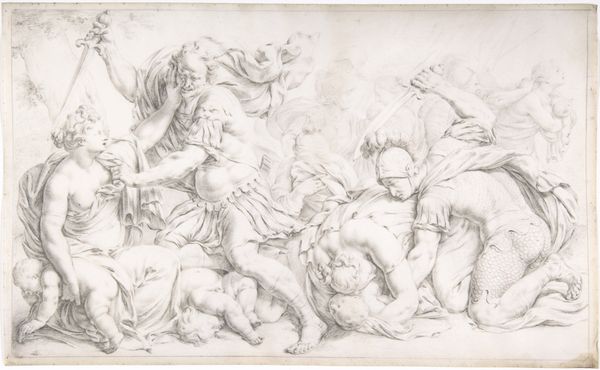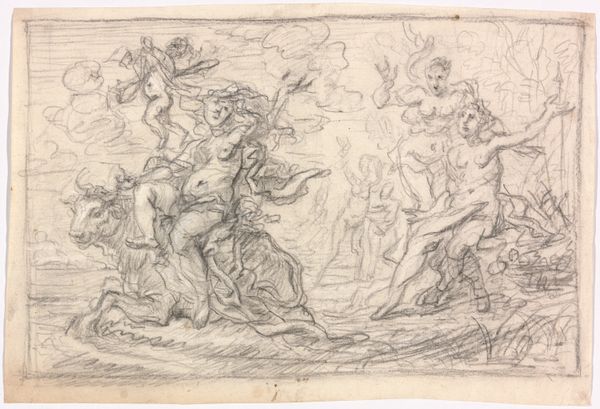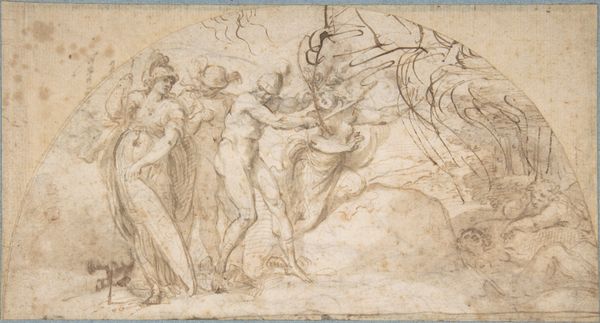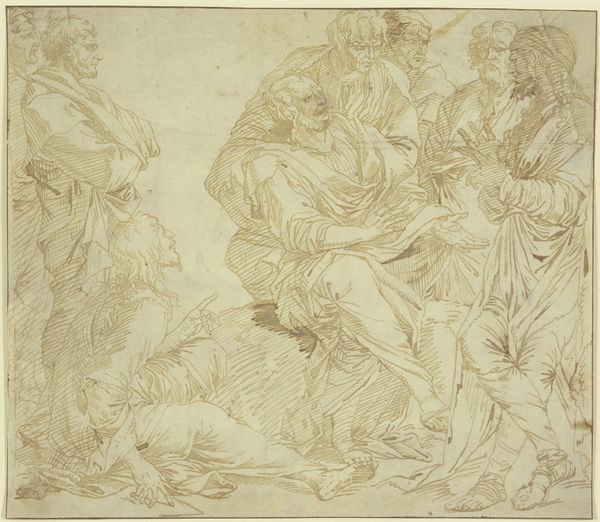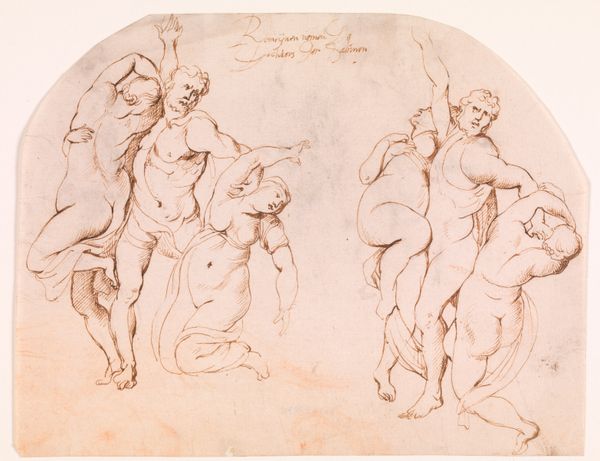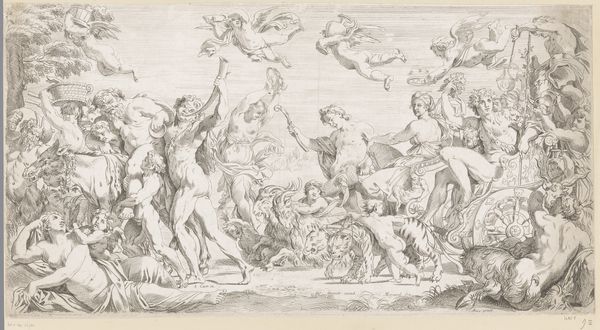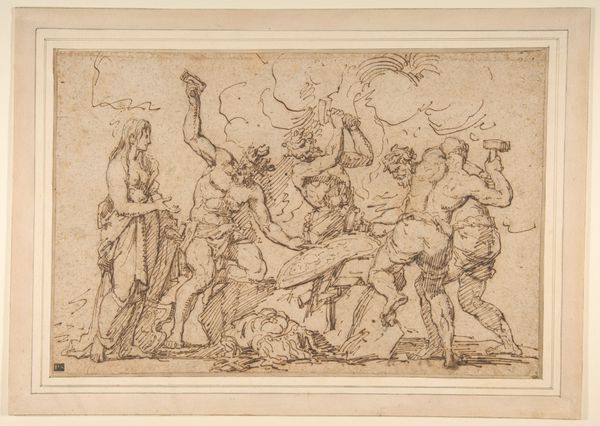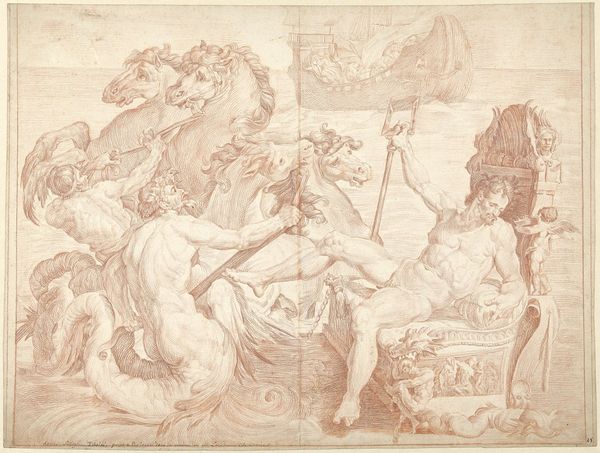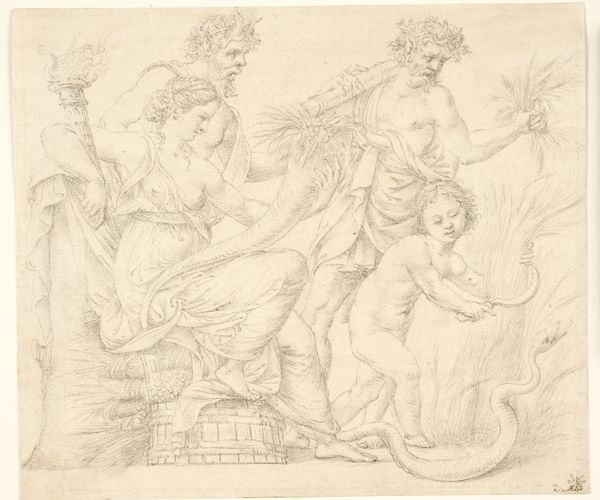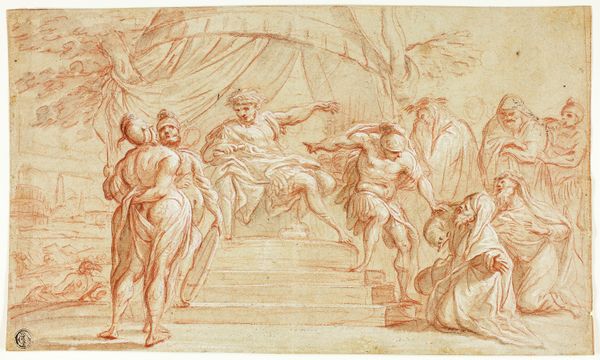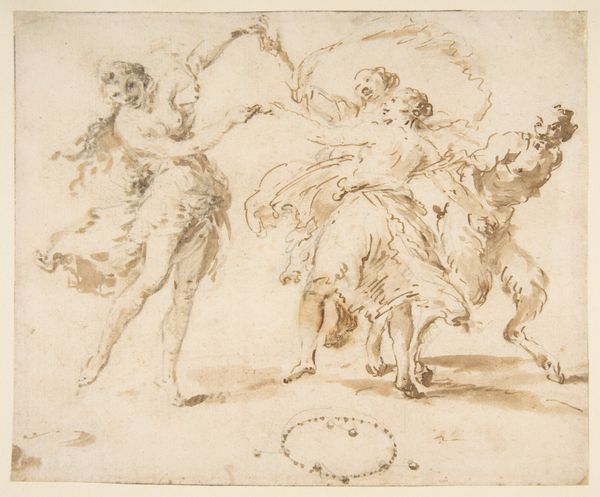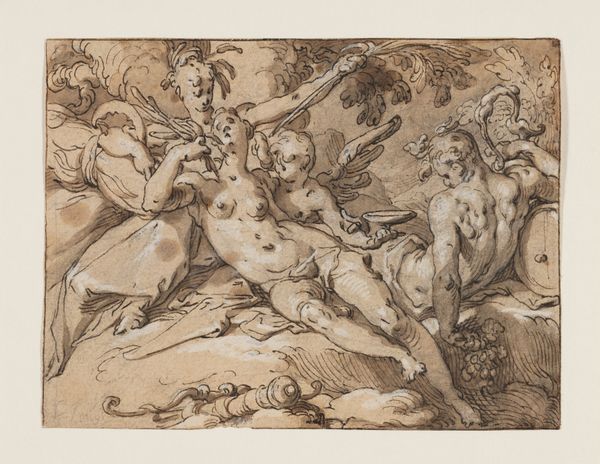
drawing, print, pencil
#
drawing
#
ink drawing
#
allegory
# print
#
figuration
#
child
#
pencil
#
horse
#
men
#
history-painting
#
academic-art
#
nude
Dimensions: Sheet: 7 11/16 × 12 15/16 in. (19.5 × 32.8 cm)
Copyright: Public Domain
Willem van Mieris made this drawing, “The Rape of the Sabines,” with pen and brown ink in the Netherlands sometime between 1677 and 1747. It depicts a dramatic scene from Roman history when the city’s founders, lacking women, abducted wives from the neighboring Sabine people. The story, popular in European art, offered artists like van Mieris a chance to display their skill in rendering dynamic figures and emotional extremes. But how might viewers in the Dutch Republic, a society that prized order and domesticity, have interpreted the theme of violent abduction? Van Mieris was part of the Leiden school, where artists often depicted scenes from daily life with moralizing intent. Perhaps this drawing served as a cautionary tale, reminding viewers of the chaos that could erupt when societal norms are violated. Or maybe it subtly commented on the Dutch Republic's own colonial ventures, where issues of consent and coercion were often at play. To fully understand the artwork, we need to delve into Dutch history, literature, and social customs. Only then can we appreciate its complex relationship to the cultural values of its time.
Comments
No comments
Be the first to comment and join the conversation on the ultimate creative platform.
